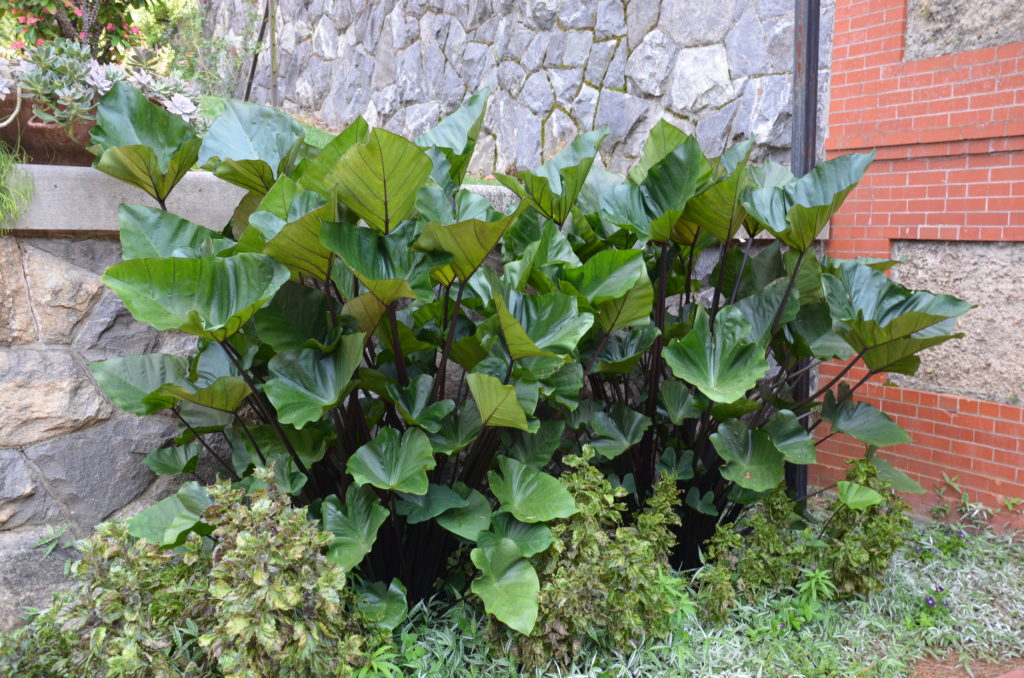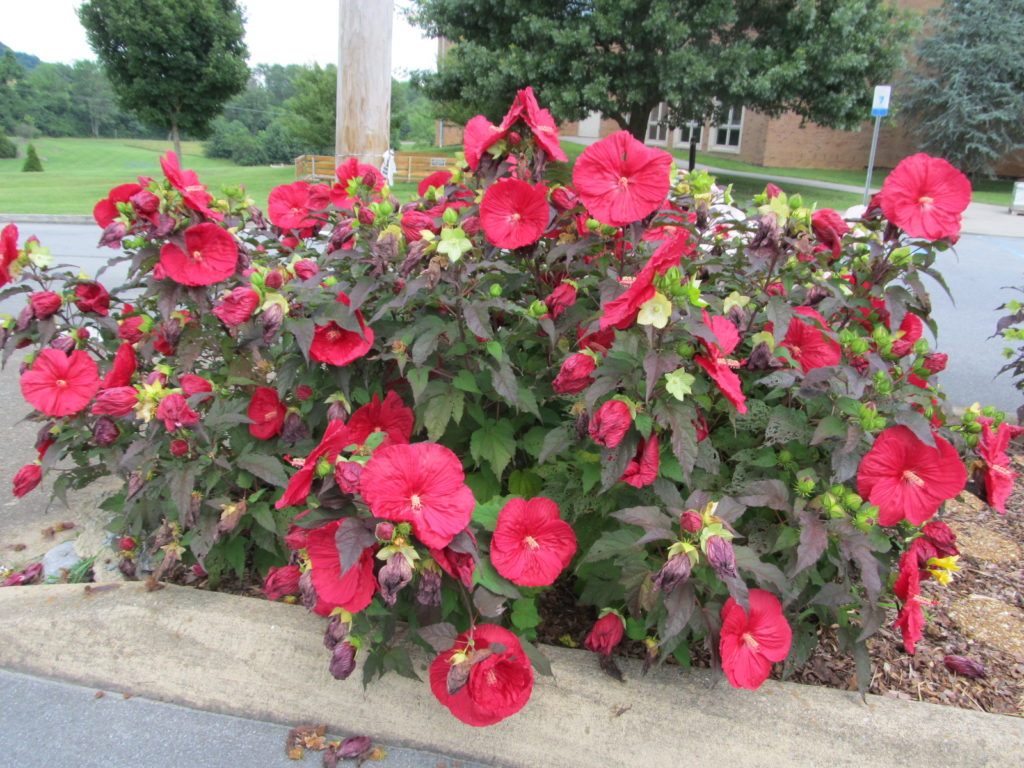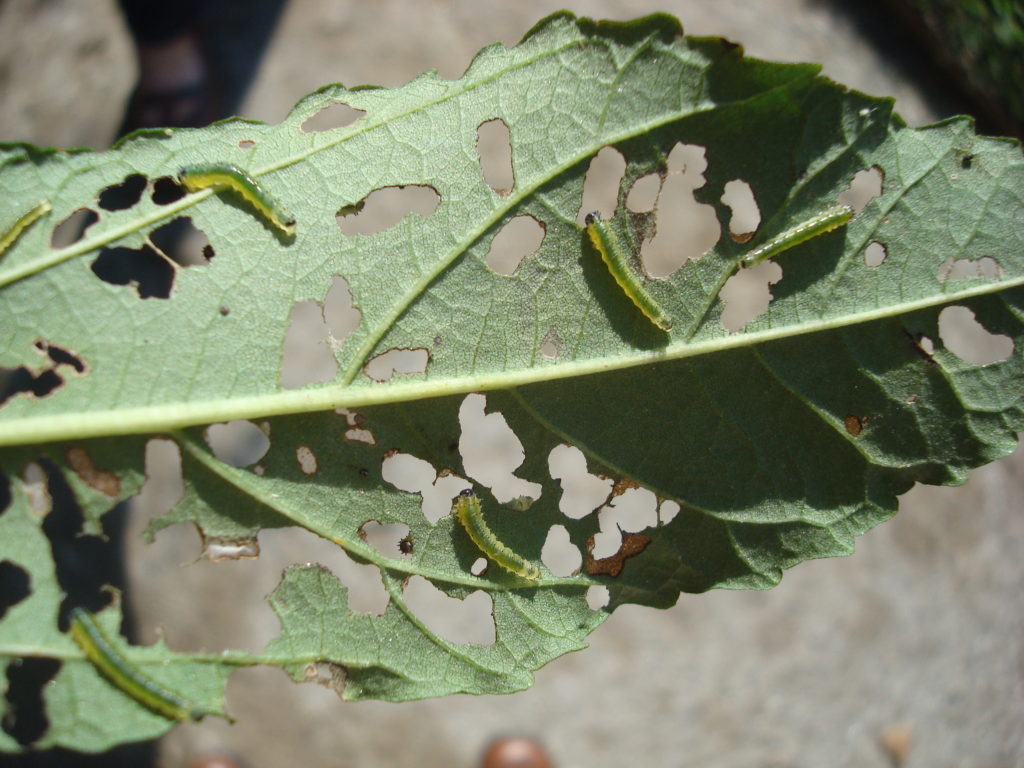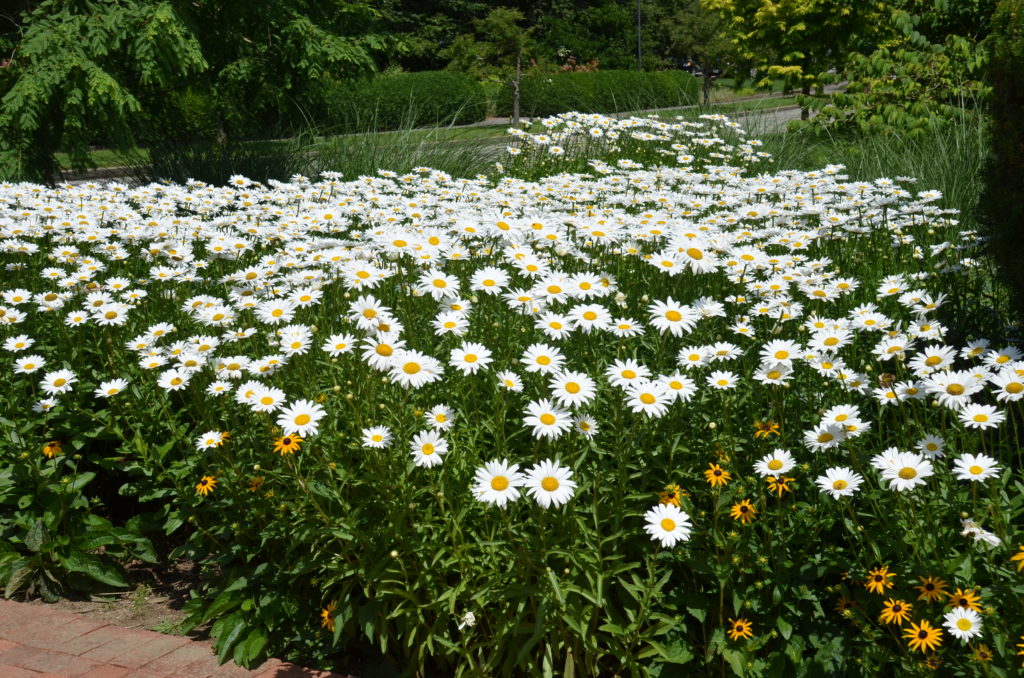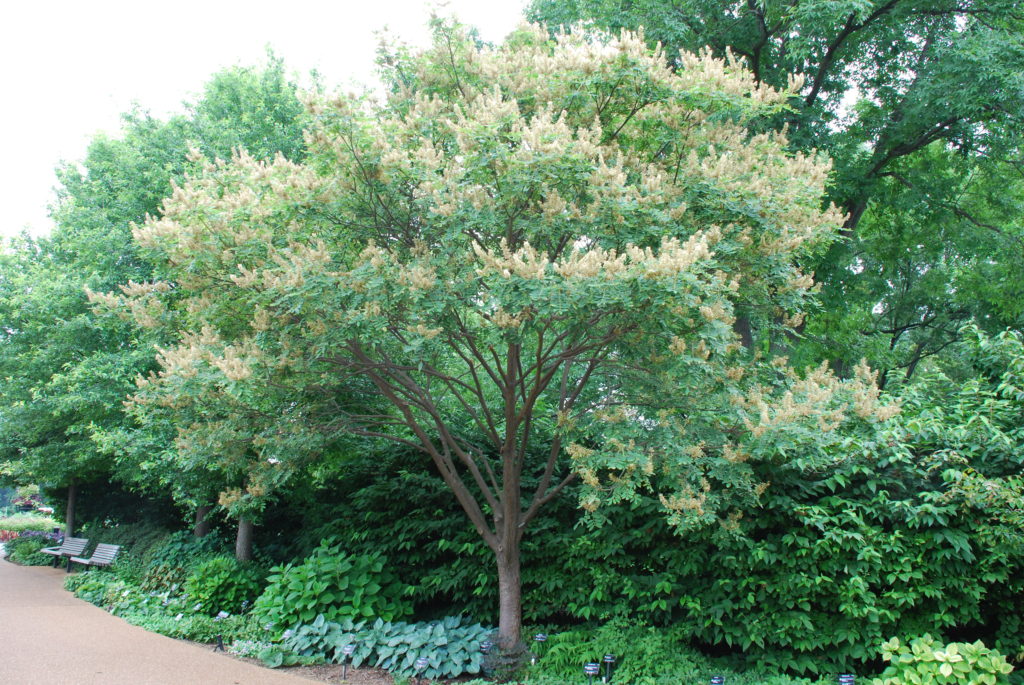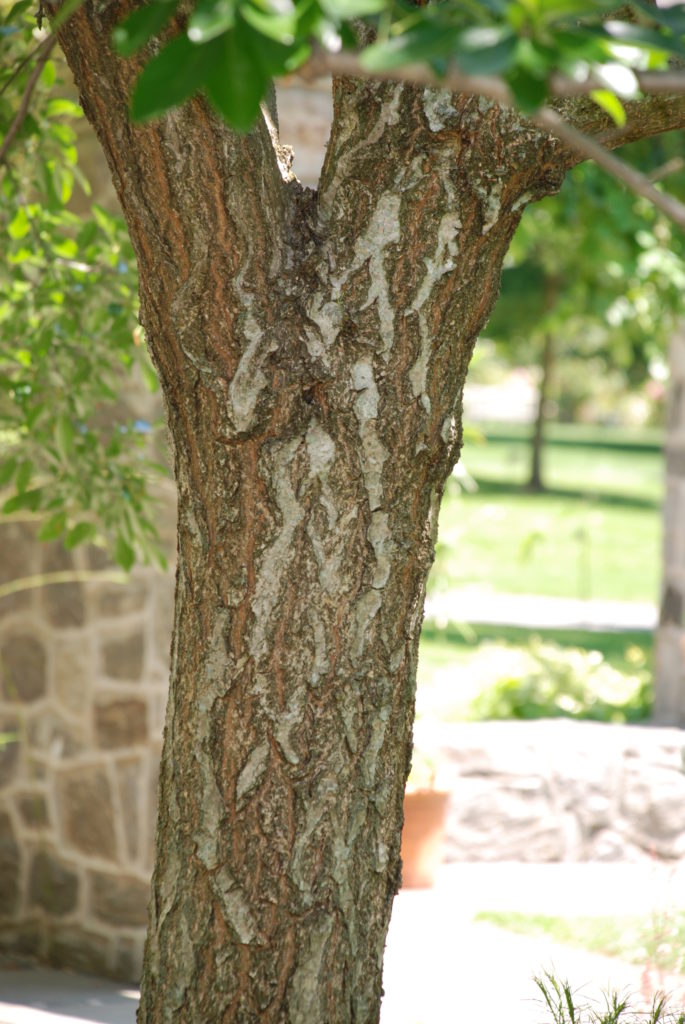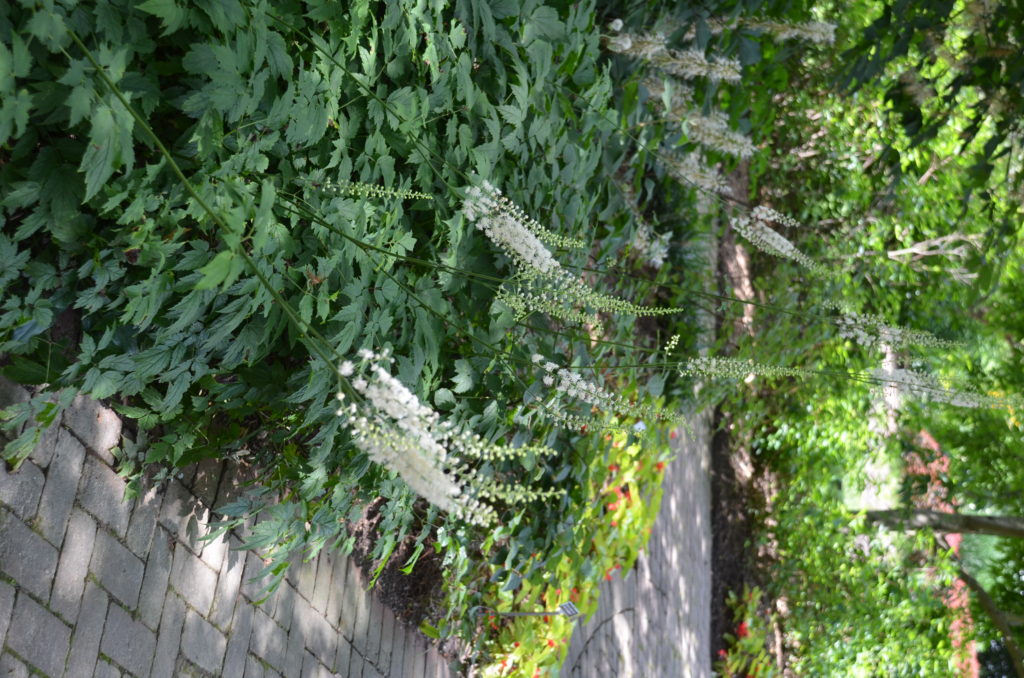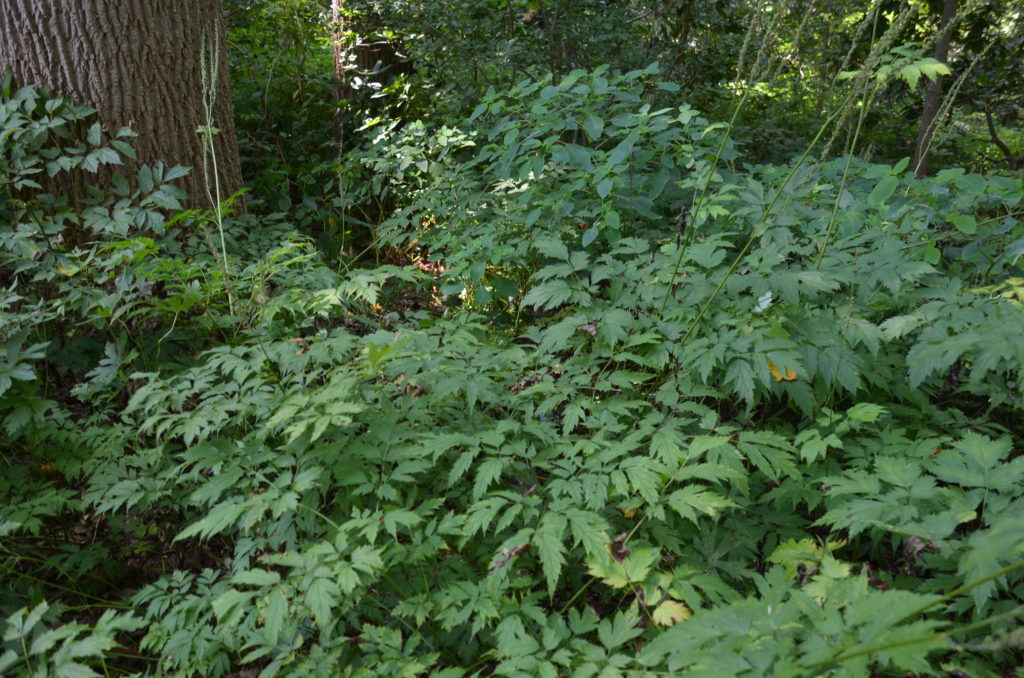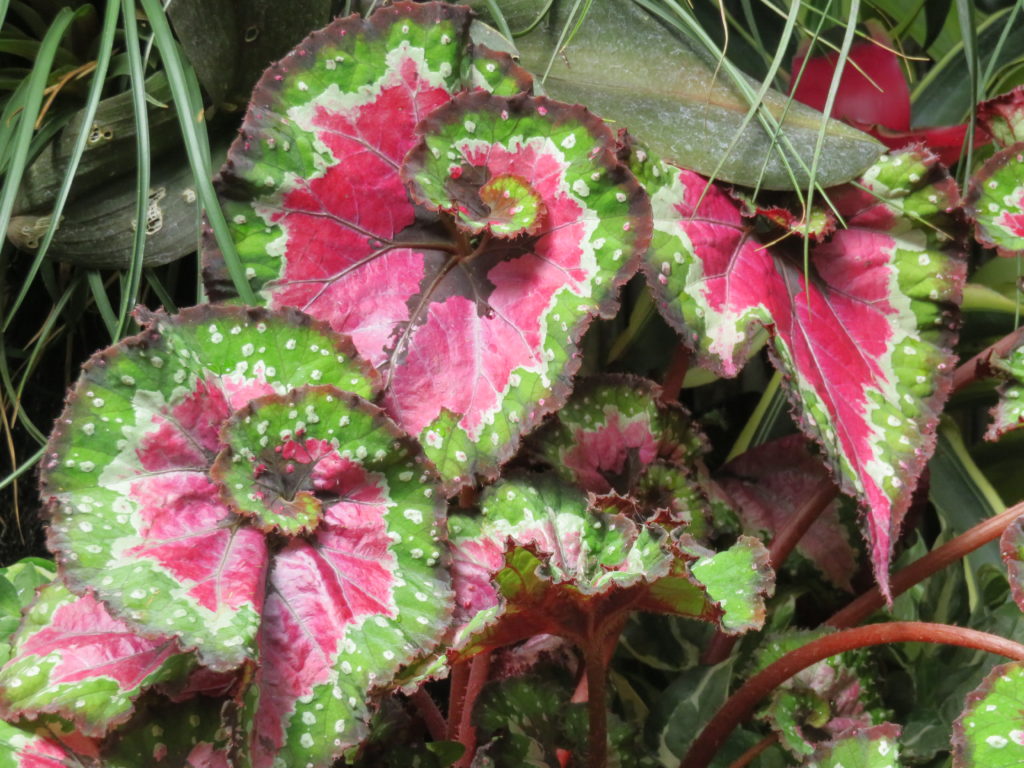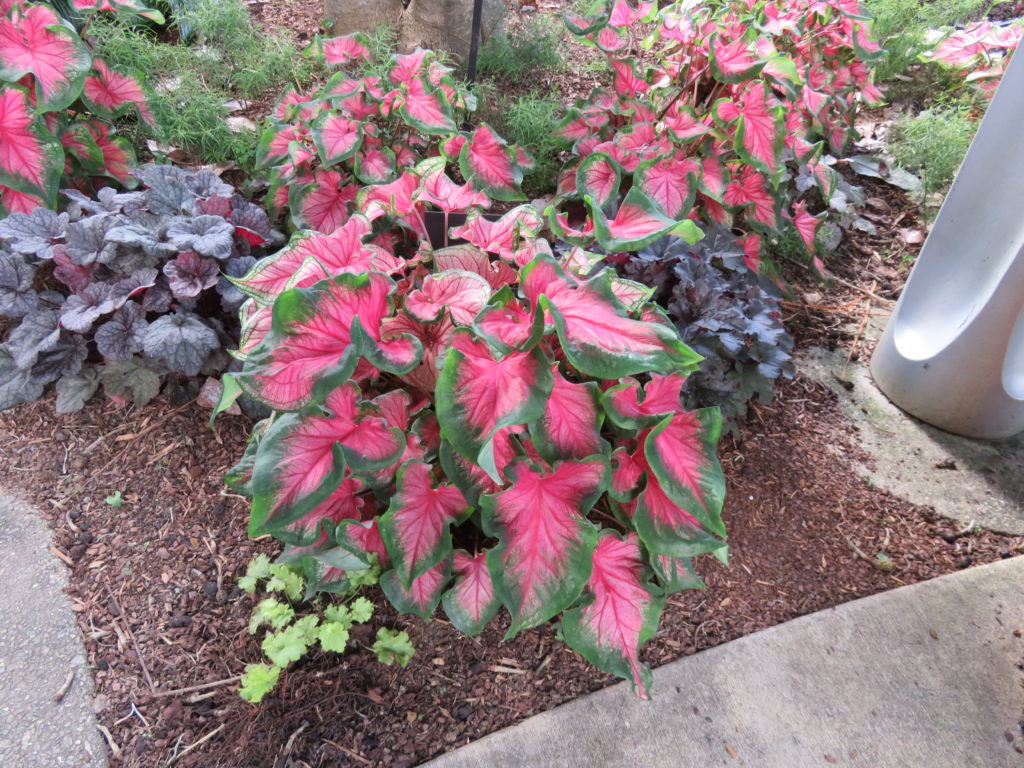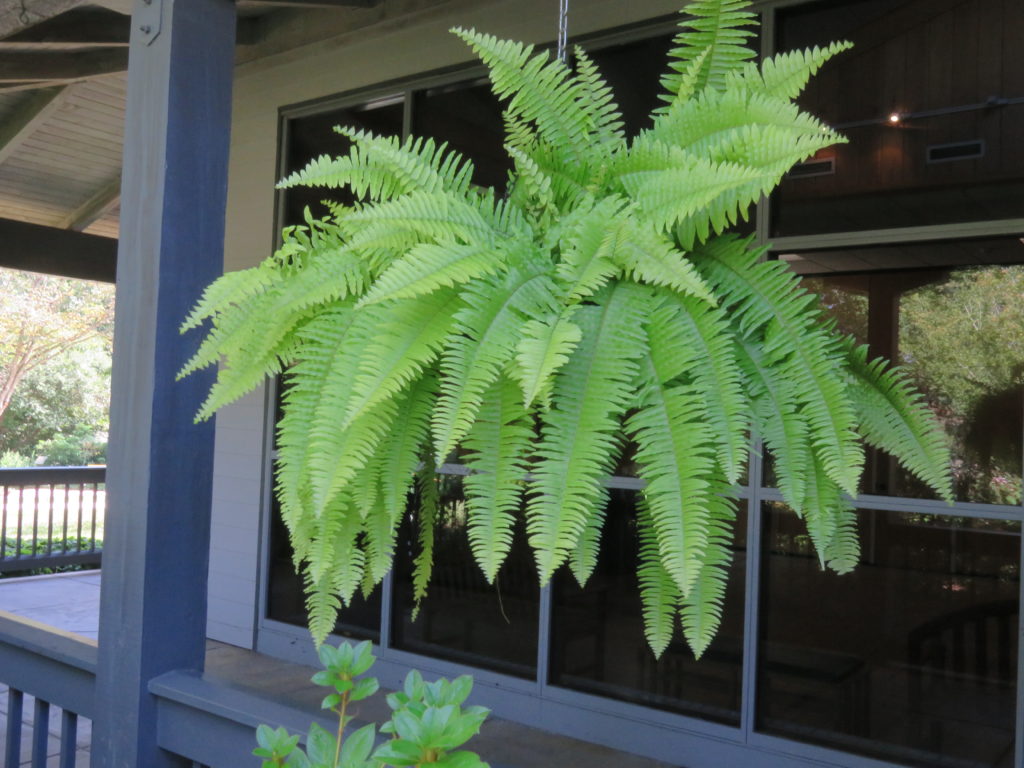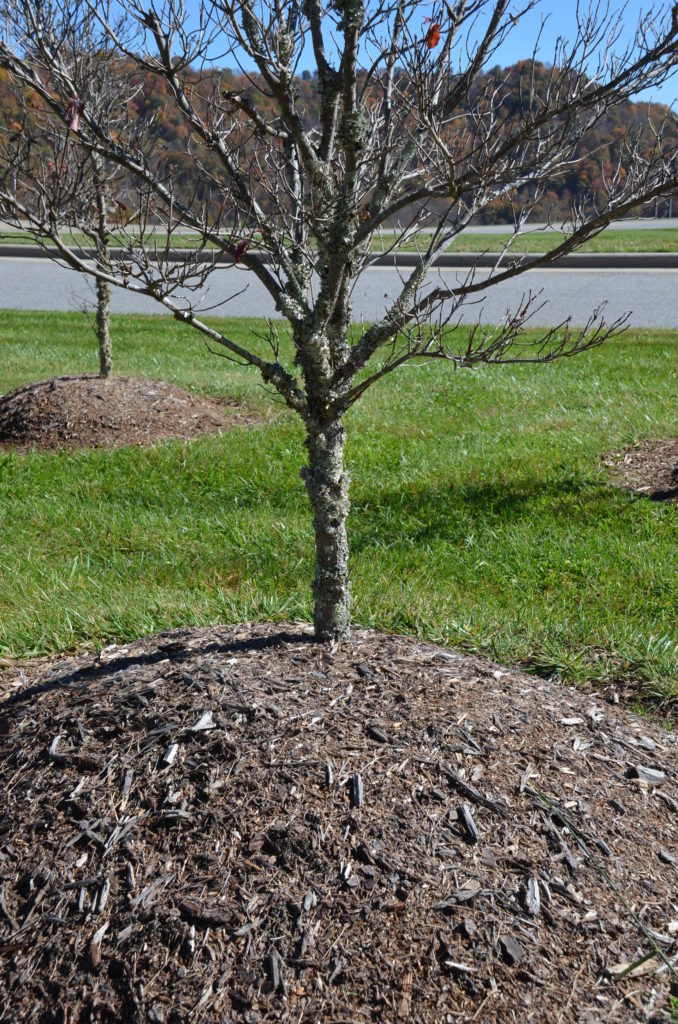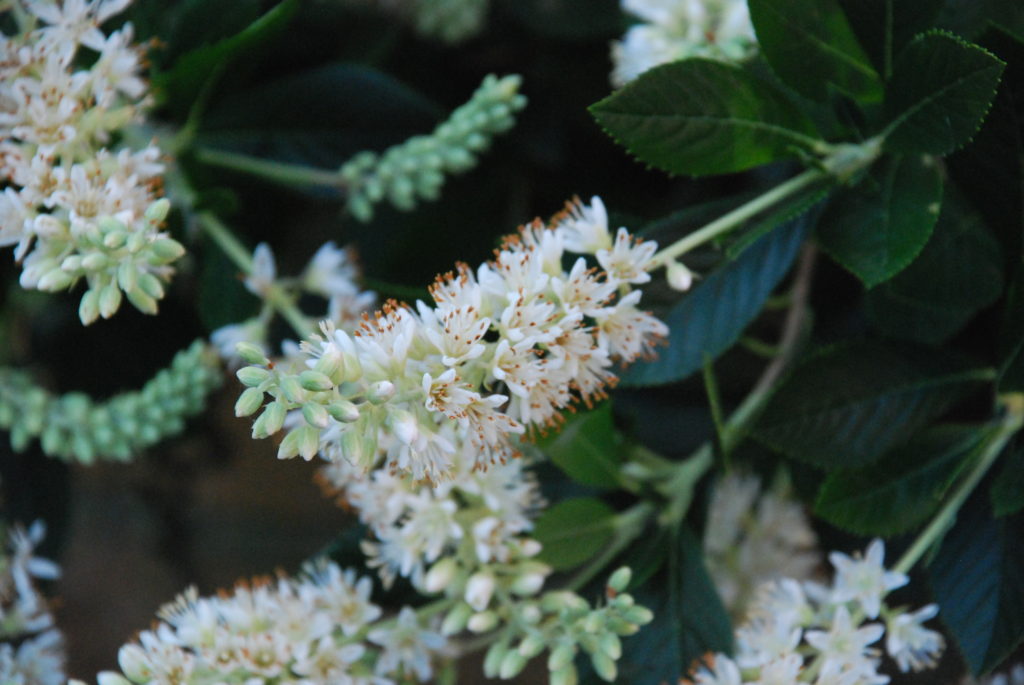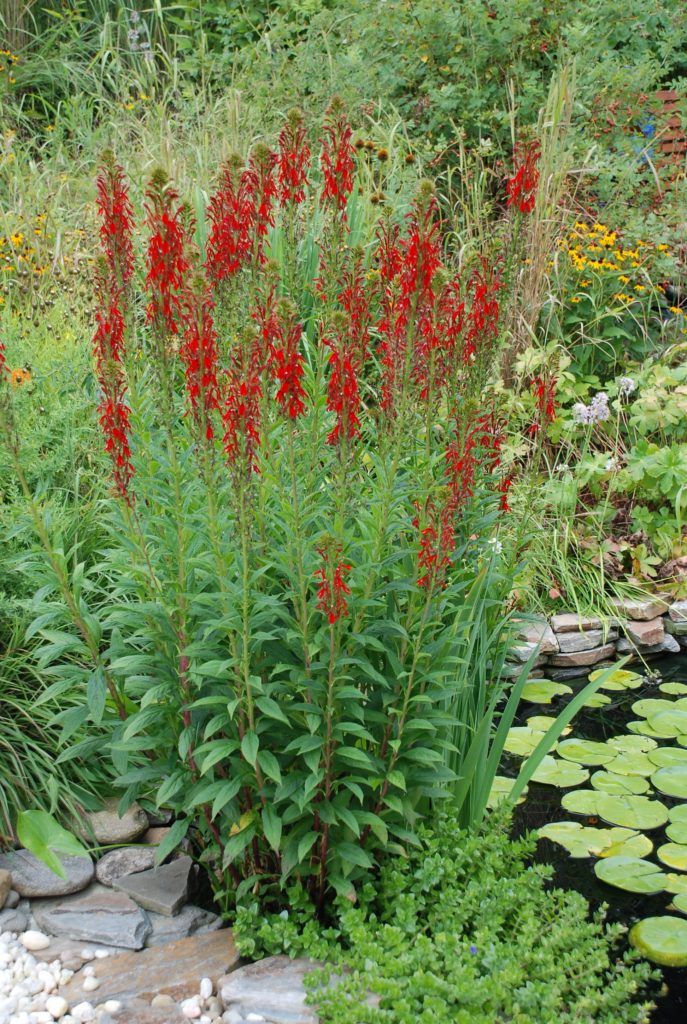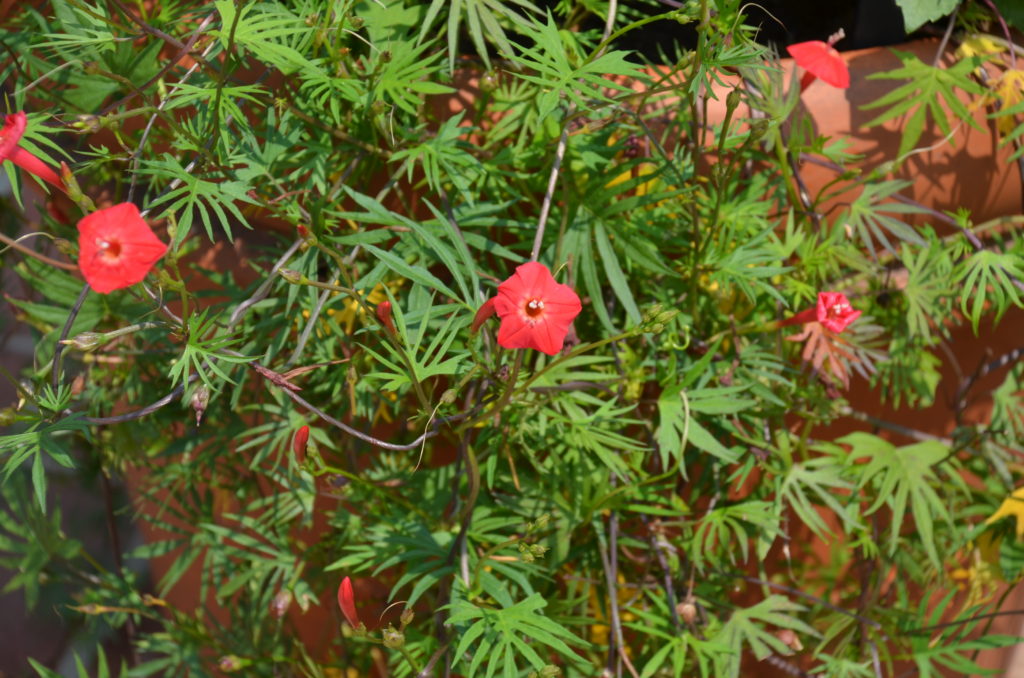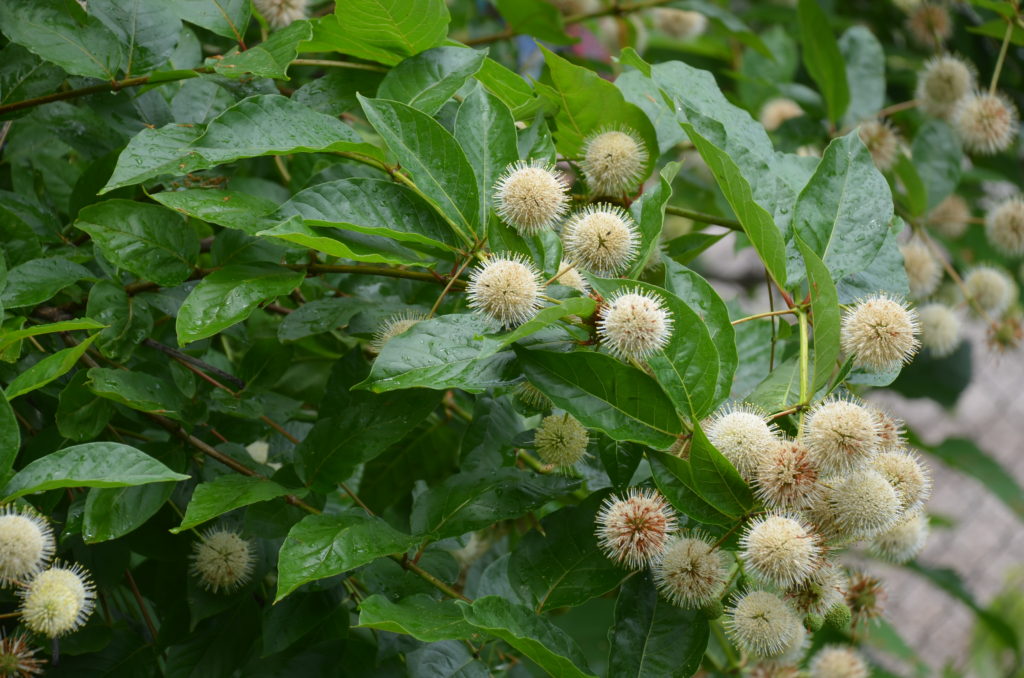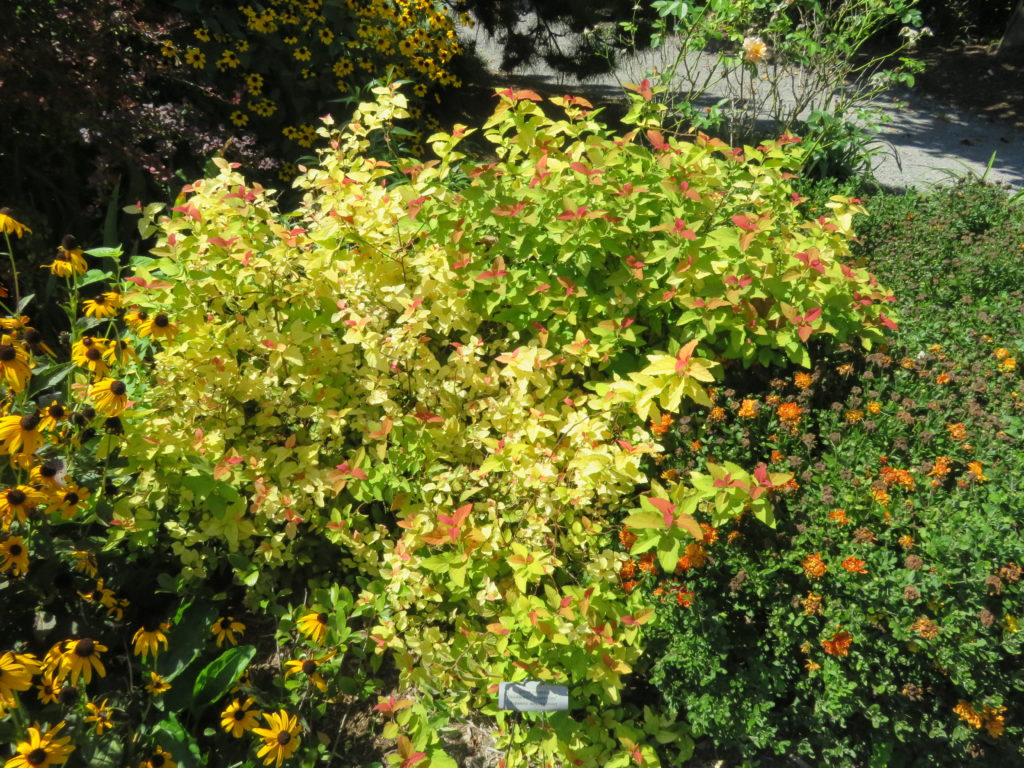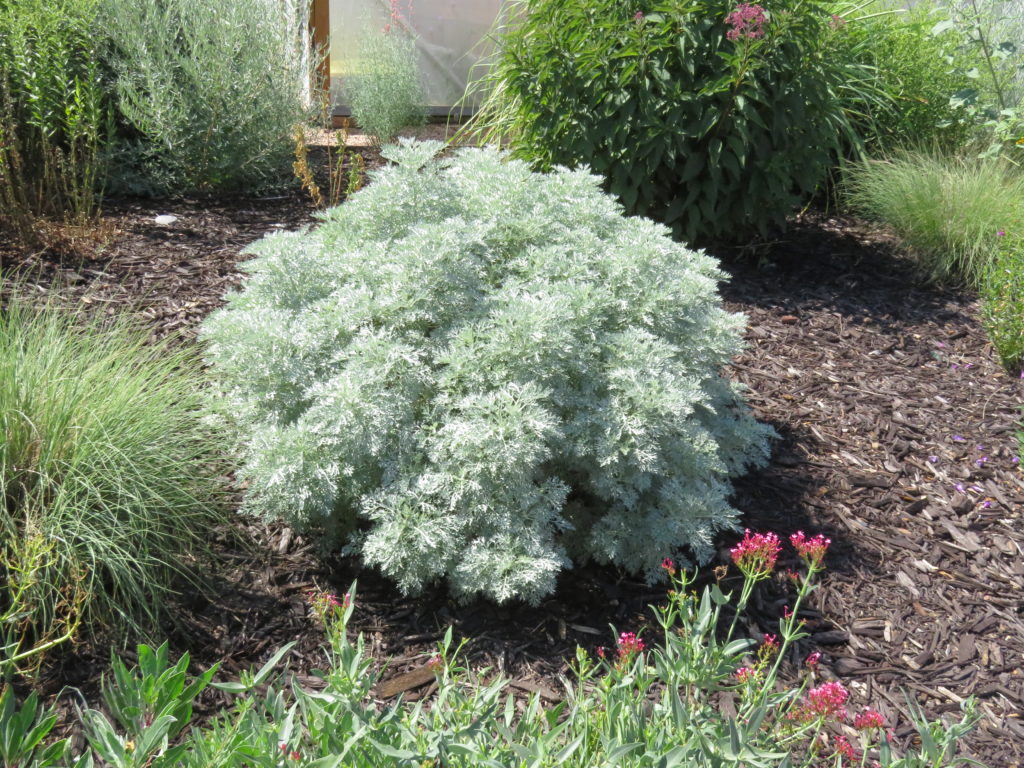
Silver King Artemisia (Artemisia ludoviciana ‘Silver King’) is an aggressive form with bushy, upright patch of fragrant silvery foliage and loose sprays of grey flowers in midsummer. Prune back hard after flowering to rejuvenate foliage. Deer and drought resistant. (z 3-7).
Silver Mound Artemisia (Artemisia schmidtiana ‘Silver Mound’) – soft feathery leaves grow into compact, cushion-like mounds. It has multiple
landscape applications including edging, rock gardens or containers. Deer and rabbit resistant. (z 3-7)
Heuchera ‘Dolce Silver Gumdrop’ –a compact, tidy mound of silver metallic foliage brightens up any shade garden along with multiple stems of tiny pink flowers. This H. villosa hybrid develops a rosy blush as the season progresses. (z 3-8).
Brunnera macrophylla ‘Jack of Diamonds’ – giant version of the classic ‘Jack Frost’ – with a twist. Huge 9-10 inch, dark green veined leaves, have a heavy silver overlay and overlap at base. Clusters of baby blue, forget-me-not type blossoms rise above the spring foliage. (z 3-8).
Cheddar pinks (Dianthus gratianopolitanus ‘Firewitch’ (Fuerxe’) – ground hugging low mats of silvery blue evergreen foliage grows about 4-6 inches tall (flowers top out at 7-8 inches tall), and 18-24 inches in diameter. (z 3-8).
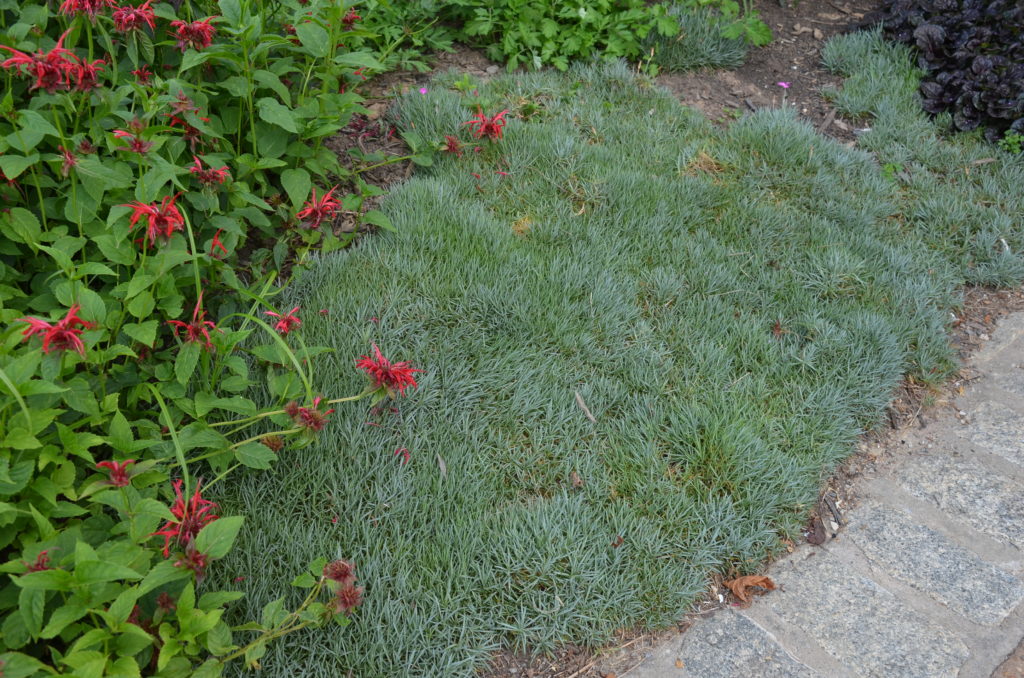
Licorice Plant (Helichrysum petiolare) is grown for its silvery, densely-felted foliage and trailing habit. It is a shrubby, woody-based tender perennial grows 1-2 feet high (3-4 feet wide) on upright to trailing stems densely clad with soft, woolly, oval-rounded, gray-green leaves (1.5” long). Tiny white flowers are insignificant and often removed by gardeners as they appear. Plant foliage has a slight licorice aroma in the heat of the summer. (z 9-11).
Lavender (Lavandula angustifolia) is an evergreen 3 feet tall perennial
is a dwarf shrub that blooms in the summer and has aromatic leaves, flowers, and dry seed heads. Utilized as a border, a low hedge, in massing, in containers, and in herb gardens. (z 5-9).
Spotted deadnettle (Lamium maculatum ‘White Nancy’) – a silvery leaf groundcover that grows 6-8 inches high and spreads 2-3 feet wide. If foliage declines in mid-summer, mow back or shear plants to stimulate fresh new growth. White flowers in late spring is an additional asset. (z 3-8).
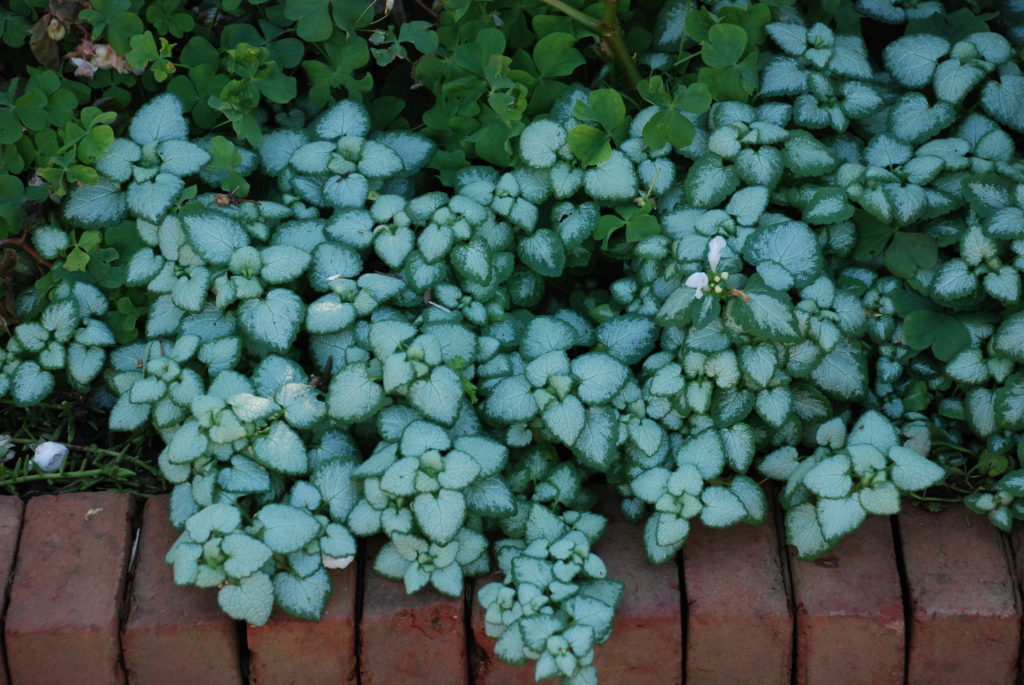
Japanese Painted fern (Athyrium niponicum var pictum) is a lovely deciduous fern with soft blue-green fronds with a silvery overlay accented by contrasting dark burgundy midribs. (z 3-8)
Dusty Miller (Senecio cineraria), also called Silver Ragwort, is a hardy herbaceous perennial typically grown for its grayish ornamental foliage. Leaves are covered with fine matted hairs, giving them a felted or woolly, silver or white. (z 7-10)
Dichondra ‘Silver Falls’ – is a vigorous annual vine with round silver foliage on silver stems. It is very heat and drought tolerant often used as a trailing plant in baskets, window boxes and other planter containers. (z 9-11).
Lamb’s Ears (Stachys byzantina ‘Helene von Stein’) is an improved non-blooming form that results in larger fuzzy, silver foliage (8 inches tall x 15-18 inches wide). Helen von Stein, aka “Big Ears” makes a great edging plant with mounding habit. Neat, non-blooming plant that does not reseed. (z 4-9).
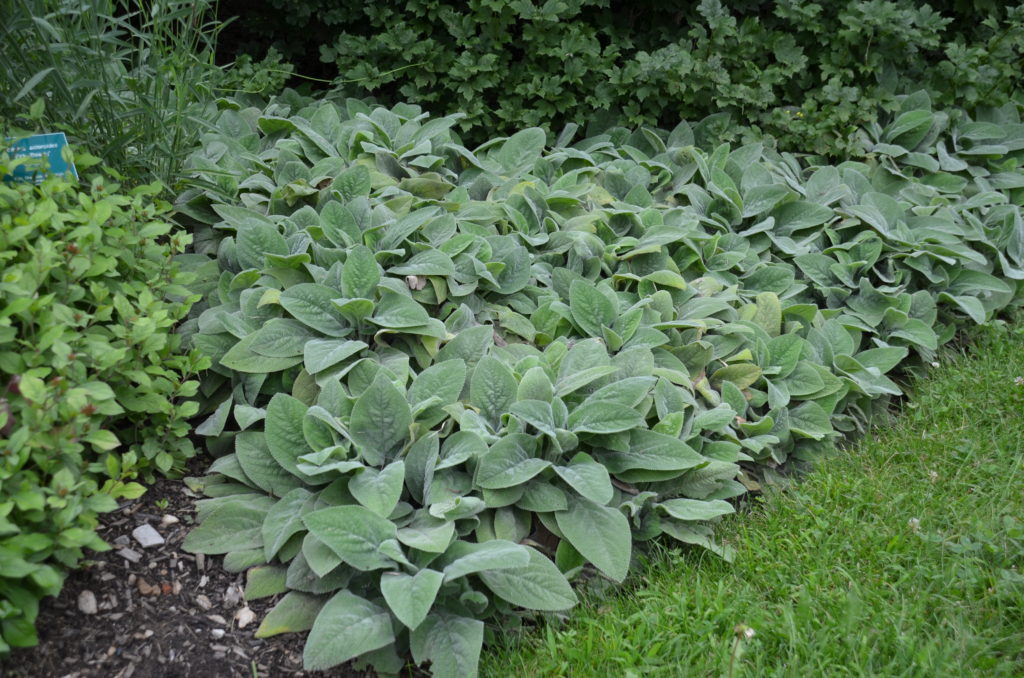
Plants With Silver Foliage

